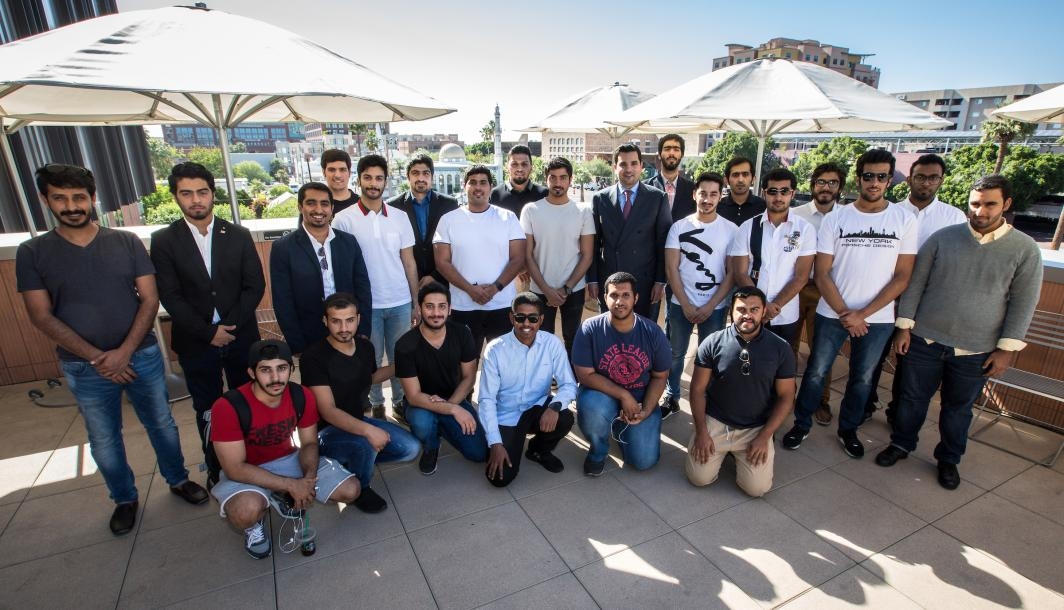
A Lebanese-American businessman, Nader currently serves as an adviser to Emirati Crown Prince Mohammed bin Zayed Al-Nahyan, who has developed a close relationship with Jared Kushner. For years, Nader has been a well-known, if somewhat off-the-radar, figure in certain political circles. According to the Times, Nader worked with the Bill Clinton administration in its attempt to broker a peace deal between Syria and Israel, convincing the White House that he could leverage his influential contacts with the Syrian government. After the 2003 invasion of Iraq, Nader worked with Prince’s private security company, Blackwater—which is now known as Academi—as a “business-development consultant,” according to a 2010 deposition. At the time of the 2016 election, he was serving as an adviser to Prince Mohammed, and was a frequent visitor to the White House during the early months of the Trump administration, where he met with Kushner and former chief strategist Steve Bannon.
***
George Nader, a Middle East expert connected to several associates of President Donald Trump, is now cooperating with the special counsel Robert Mueller and has testified before a grand jury in the Russia investigation, The New York Times reported Tuesday.
FBI investigators approached Nader when he landed at Washington Dulles International Airport in January and served him with search warrants and a grand jury subpoena, the report said. At the time, Nader was en route to Mar-a-Lago to meet with President Donald Trump and his associates to celebrate the anniversary of Trump’s first year in office.
The meeting was said to have raised red flags within the US intelligence community because the government was not notified of Crown Prince Mohammed’s visit. The Obama administration felt misled by the UAE as a result, which prompted then-national security adviser Susan Rice to request that Trump associates’ names be unmasked in intelligence reports detailing the meeting.
A senior Middle East official acknowledged to CNN last year that the UAE did not inform the US of the crown prince’s visit in advance but denied that the UAE had misled the Obama administration. The official said that the December Trump Tower meeting was merely part of an effort to build a relationship with the incoming administration.
Mueller’s prosecutors have repeatedly questioned Nader about the meeting, as well as his meetings in the White House with Kushner and Bannon following Trump’s inauguration.
That same month, Kushner met with Sergei Kislyak, then Russia’s ambassador to the US, and reportedly proposed setting up a secure back-channel of communication between Trump and Moscow using Russian facilities.
Shortly after, Kushner had a separate meeting with Sergei Gorkov, the CEO of the sanctioned Russian state-owned bank Vnesheconombank, which was reportedly orchestrated by Kislyak. The interaction piqued investigators’ scrutiny as the FBI began examining whether Russian officials suggested to Kushner that Russian banks could finance Trump associates’ business ventures if US sanctions were lifted or relaxed.
Kushner’s meeting with Gorkov came as he was looking for investors to shore up financing for a building on Fifth Avenue in New York that his family’s real-estate company had purchased.
Prince told the House Intelligence Committee last year that he knew Kirill Dmitriev was a Russian fund manager but did not know it was a sanctioned fund that was controlled by the Russian government.
After the Seychelles meeting, Dmitriev also met with Anthony Scaramucci, who would later become the White House communications director, at the World Economic Forum in Davos, Switzerland.
Russian state media quoted Scaramucci as saying, after his meeting with Dmitriev, that the Obama administration’s new sanctions on Russia — which were imposed that month to penalize it for interfering in the 2016 election — were ineffective and detrimental to the US-Russia relationship.
Dmitriev’s company, the Russian Direct Investment Fund, was included on the list of Russian economic entities that were penalized as part of that decision.
An RDIF spokesperson reached out to Business Insider to clarify that the fund was included on the US sanctions list because of its status as a former subsidiary of Vnesheconombank. More here.
When it comes to the Russian Direct Investment Fund, Americans and people with ties to the U.S. have held some of the top spots at RDIF. For years, a deputy CEO at the fund was Sean Glodek, a Stanford alum and Wharton MBA graduate who previously worked at Deutsche Bank and Lehman Brothers. The current deputy co-director for RDIF’s Russia-China investment fund is Oleg Chizh, a Brandeis and Columbia graduate. Other Americans have served in top investor relations and advisory roles.
Part of its mission is to make outsiders more comfortable investing in Russia by pairing their capital with RDIF funds. It was formerly part of VEB, the bank that doubles as Russian President Vladimir Putin’s “private slush fund,” according to Atlantic Council fellow Anders Aslund. More here.







